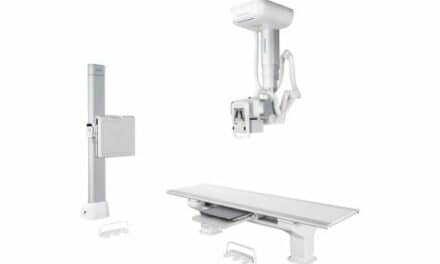Win approval for that operations and capital budget by arming yourself with figures, facts, and high-ranking allies.

An exaggeration, clearly, but not that far off the mark when it comes to describing how some clinical engineering department heads feel when submitting operations and
capital budgets to hospital top executives and other financial decision-makers. However, there’s no need to be sheepish, experts assure.
“If you offer a budget that’s solidly put together, you can be confident about the chances of getting what you’re requesting,” says Henry [Hank] Stankiewicz, chief clinical engineer for the Veterans Affairs (VA) New England Healthcare System in Boston.
Get Hit With a Clue-By-Four
Successful budgeting requires, first of all, that you know what you’re dealing with when it comes to the numbers. Stankiewicz likes to begin the task of accumulating such knowledge by tallying the equipment inventories at his hospitals.
“Without knowing what’s where, it’s difficult to reliably calculate what our [preventive maintenance (PM)] and replacement costs are going to be for the year ahead,” he says. “Let me give an example. Not long ago, three of my medical centers merged. In the course of that merger, we lost track of a gamma camera. It didn’t go anywhere; we just stopped accounting for it, and it no longer showed up on our PM list. We discovered this problem when users of the camera called us to arrange for service. Unfortunately, because the camera was inadvertently left out of our inventory count, we had zero funds allocated for this particular camera’s maintenance in the budget that by then was in effect.”
Another way Stankiewicz acquires the insights he needs to budget properly is by researching his hospitals’ strategic plans for the coming fiscal year and beyond.
“I need to know what capital purchases and renovation works are planned, because these will very likely affect my labor or equipment needs,” he says. “I’ll illustrate it this way: Assume you don’t know that your organization is planning to relocate all its gamma cameras from multiple sites into a single location, and you don’t find out about that until 2 months before it happens, but 1 month after the current year’s budget has already gone into effect. In that case, you’re not going to be budgeted to help with the move. If your organization is like mine, you’re going to have to take away dollars from someplace else to make up for the moving expense that caught you off-guard.”
Stankiewicz says the way to become clued into budget-impacting strategic initiatives at the earliest possible juncture is by actively participating in the operational and strategic planning of the hospital.
“You have to be sitting at the adult table,” he says. “You have to have visibility in your organization so that hospital staff and executives keep you informed on what they are planning and thinking about planning. Landing an invitation to sit at the adult table involves convincing decision-makers that projects will go smoother when you’re informed right from the get-go about planning.”
In conjunction with these knowledge-building exercises, Stankiewicz makes a habit of collecting input and ideas from his counterparts at other Veterans Affairs systems. In this fashion, he’s able to gain a clearer view of how much he should be spending on various budget items.
“The federal government publishes a guide called ‘Biomedical Engineering Resource Survey,’ which captures expenditures from all VA hospitals across the country,” he says. “It tells us what everybody in the system is spending on parts, labor, and contracts. I can sift through that data and develop benchmarks using hospitals with characteristics similar to mine, including size, equipment inventory, costs, and market conditions. If my numbers are out of line with those other hospitals that I’m benchmarking against, I can do some investigating to find out why.”
For Ted Cohen, MS, CCE, manager of clinical engineering at University of California, Davis, Medical Center in Sacramento, one of the biggest challenges of budgeting entails anticipating outlays on major-item replacement parts and repairs.
“It’s difficult to estimate those kinds of costs since you can’t know when, for instance, the next x-ray tube is going to break,” he says.
Jennifer C. Ott, director of clinical engineering at 356-bed St Louis University Hospital in Missouri tries to get a lock on hard-to-pin-down costs by maintaining meticulous historical records, either by department or by equipment type, so that trends can be observed.
“I keep copies of service contracts and all capital purchase orders—everything that might in some way be helpful later on when putting together the next budget,” says Ott, a past president of the American College of Clinical Engineering (ACCE) and currently a secretary for that organization’s Healthcare Technology Foundation.
Friends In High Places
It helps, too, if you can cultivate friendships among key decision-makers.
“We’re so focused on working with the clinical staff that we forget there’s a group of people we’re also accountable to known as administration,” Stankiewicz says.
Stankiewicz divulges that he and his region’s CFO speak often about budgetary matters, something Stankiewicz is able to do only because he made the effort to get to know the CFO.
“Becoming friends with the CFO doesn’t require that you send flowers and candy to butter him up,” he muses. “You just have to develop a comfort level between the two of you.”
Getting together with the people who run the accounting department—the CFO’s support team—can be equally productive. Ott considers it the most important secret of success in budgeting.
“The accounting staff are the ones who will help you present the budget numbers in such a way that decision-makers will understand what you’re proposing and be more inclined to buy in,” she says.
The budgeting process at Ott’s hospital has changed in recent years in response to upper management’s desire to streamline things. However, as Ott has discovered, one person’s streamlining is another’s logistical headache.
“Our organization looks at what my department has spent during the previous 2 years on operations and at our spending commitments 6 to 8 months out,” she says. “From that, they try to predict how much we’ll need for the upcoming year. They give us the numbers and then allot us 48 hours to review them, at the end of which time they’re cast in concrete—unless we’ve raised a challenge, in which event there’s opportunity for negotiation.”
All departments at the hospital receive budget numbers in like manner and with the same 48-hour response deadline.
“In the span of those 2 days, most department managers seek out my advice on whether I think the amount of money budgeted for them with regard to equipment repairs and service contracts is sufficient,” she says. “It makes for a lot of work on my part, but I don’t mind. It’s a chance for me to further my relationships with those department leaders—my customers.”
Ott appreciates that each department in her hospital is financially responsible for the equipment costs it incurs during the year, rather than having all of those costs consolidated as items in her department’s budget and hers alone.
“When you free the other departments of financial responsibility, they seldom develop a sense of ownership over the costs,” she explains. “The way we budget here, with each department having its own equipment-repair and service-contract budgets, they have a vested interest in keeping those costs under control.”
An Open-Book Test
Armed with figures, facts, and friendships, it’s time to stand before the decision-makers and either make a presentation or field their questions, or both. In any event, be emotionally and intellectually ready when you walk into the conference room where that conclave is held, Stankiewicz says. However, being ready doesn’t mean you have to approach it the night before as if you’re cramming for college midterms.
“Fortunately, it’s not a closed-book test,” he laughs. “You don’t need to have all the data in your head when you sit down for the budget meeting, but you do need to have all the data accessible at your fingertips so that if you’re asked a question, you can refer to the appropriate page and provide the right answer.”
Stankiewicz says he takes into budget meetings relevant spreadsheets, graphs, abstracted data, and even raw data.
“It’s just a matter of being appropriately prepared,” he says. “Ahead of time, ask your friend the CFO to give you a heads up as to what kind of support documentation he’s looking for. Otherwise, you run the risk of being sandbagged by questions you’re not expecting.”
The best kind of data to bring are those distilled in ways that allow your justifications to jump off the page. That’s how Ott won approval 2 years ago for a modest increase in the size of her staff.
“I had proposed that we start an internship program,” she says. “I justified it by detailing the amount of overtime hours my regular, full-time technicians spent taking care of certain basic clinical equipment needs, and juxtaposed that against the lengthy amount of time it was taking these same technicians to attend to major installations, to training, and to providing service to front-line staff. I was thus able to show that overtime would decrease and technician response time would improve with the creation of an internship program.”
The icing on the cake was Ott’s linking the request for interns to the hospital’s overarching mission.
“We’re a tertiary care facility associated with a medical school, so we’re very education- and research-oriented,” she says. “I touted that angle by saying the internship program I wanted would be a great opportunity to continue the mission of the hospital, only in a different discipline from the norm.”
As all of this demonstrates, asking for money needn’t be an exercise in embarrassment—or futility, for that matter. Gather good information, develop partnerships with higher-ups whenever possible, and then confidently run your requests up the flagpole to see who salutes. You’ll be amazed at how readily the generals snap to attention. 24×7
| The Budgeting Process
The steps a clinical engineering department takes to produce and tender a budget vary from institution to institution. A typical example is the process followed each year by Ted Cohen, MS, CCE, manager of clinical engineering at 500-bed University of California, Davis, Medical Center in Sacramento. Cohen is responsible for the operations and capital budget requests of his department (which manages an enterprise-wide equipment inventory valued at about $130 million). 24×7 asked Cohen, a member-at-large of the ACCE board of directors, to describe the budgeting routine at his institution. 24×7: What’s the ritual you perform each year, vis-a-vis budgeting? actuals, adjusted for inflation and taking into account the institution’s financial strength. If it’s been a good year, there will be no cuts in the budget. 24×7: What do you do from there? 24×7: That’s operating expenses. How is the process different for your capital items? |
Rich Smith is a contributing writer for 24×7.



